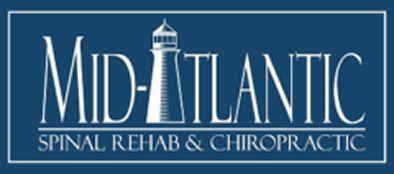More on Spondylolysis and Spondylolisthesis in Baltimore
I spend a fair amount of time blogging about acute trauma associated with Baltimore whiplash injuries, as it is a major part of my practice. One of the more interesting lower back conditions that I treat from time to time is spondylolisthesis with or without spondylolysis. These conditions are generally present prior to whiplash injuries from Baltimore auto accidents. While they do involve small bony ring fractures, they are rarely caused by the forces involved in Baltimore auto accidents.
If you recall, spondylolisthesis is a condition where one vertebrae slides forward on the one below it. In some instances, these condition is “stable” or not moving, and it is safe to undergo chiropractic manipulation and/or therapeutic rehabilitation. In other cases, these conditions are “unstable” and can get worse and continue slipping over time. Up until recently it was difficult to determine which situation a patient was in when they presented for an evaluation in my office, or for that matter, in anyone else’s office.
Spondylolistheses with spondylosis has been difficult to treat up until recently. That is, once present on standard x-rays, it is hard to know whether the patient requires bracing, surgical fusion, or whether traditional chiropractic spinal manipulation and a return to normal activities is appropriate.
A leading educator and author in the profession Dr. Terry Yochum DC DACBR has focused much of his attention to spondylolytic spondylolistheses. He has found a way to predict what he has termed “pending spondylolysis.” He can tell by looking at MRIs which patients are at the risk of developing these problems before they happen! Additionally, on patients with already existing spondylolytic spondylolistheses, he has helped to determine via MRI which patients would benefit from treatment and which ones need to be braced.
Simply put, Dr. Yochum utilizes a special MRI sequence called STIR. It stands for short tau inversion recovery. It is a sequence that suppresses the signals of fat and will demonstrate a bright white signal in the presence of marrow edema. Dr. Yochum will evaluate vertebrae on MRI using STIR imaging and he can predict with great success those patients that are at risk of developing spondylolysis by evaluating for marrow edema within the pars interarticularis of the vertebrae. If the bone marrow edema (BME) is present on STIR imaging, then the patient is at risk for developing spondylolysis. These patients should be shut down from activities and braced using a Boston Overlap Brace to reduce biomechanical stress on the pars interarticularis and to allow the body to heal. After about 90 days in the brace these patients experience complete or near complete resolution of lower back pain, with a healed bone that is stronger than before. These patients (which are usually highly motivated athletes) can resume their training without fear of worsening their original complaints.
This use of STIR imaging to assess for pending spondylolysis is also beneficial for patient who already have unilateral or bilateral spondylolysis. If a patient has an x-ray which reveals spondylolysis the question becomes is that the cause of their lower back pain? And if it is, should we be bracing them, or performing spinal manipulation? The problem with x-rays is that they are static and only show anatomy, whereas STIR MRIs reveal pathology by way of bone marrow edema. This patient that already displays spondylolysis would also undergo STIR imaging. If there is bone marrow edema and swelling the patient’s spondylolisthesis is considered “active” and they are to be braced as described above. If, on the other hand, there is no presence of edema or swelling then the lesion is considered to be inactive. In inactive spondylolytic spondylolisthesis it is safe to proceed with a course of conservative chiropractic care including spinal manipulation.
The brilliance of this discovery from Dr. Yochum is that now we don’t have to guess or practice in fear of the spondylolyltic spondylolisthesis patient. We have a way to determine if the slippage is acute and active or whether or not it is stable. This helps us to not only determine the best course of treatment for a patient, but it also helps us to prognosticate healing times.
If you, or someone you know, has experienced spondylolytic spondylolisthesis you should be evaluated by a Chiropractor such as myself who understands how to determine if these conditions are active or inactive. Please contact Mid-Atlantic Spinal Rehab & Chiropractic at (443) 842-5500. We would be happy to help!
